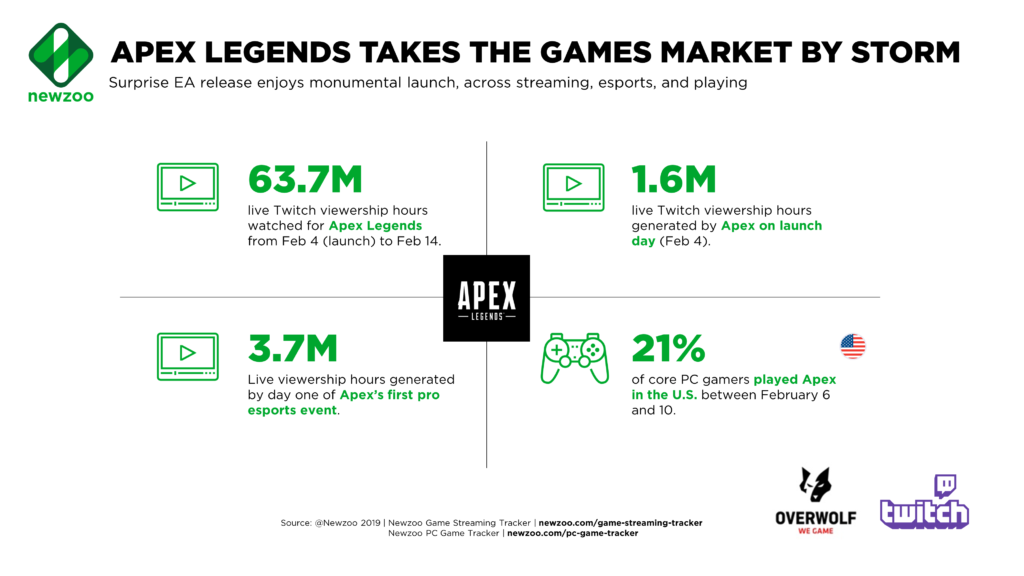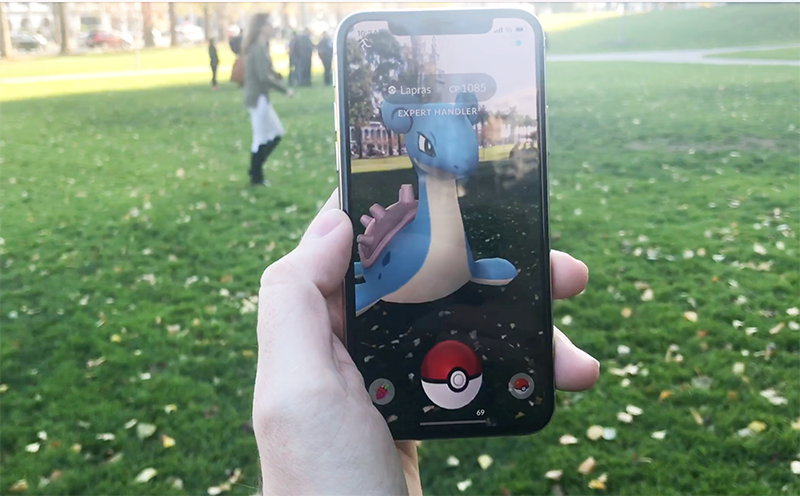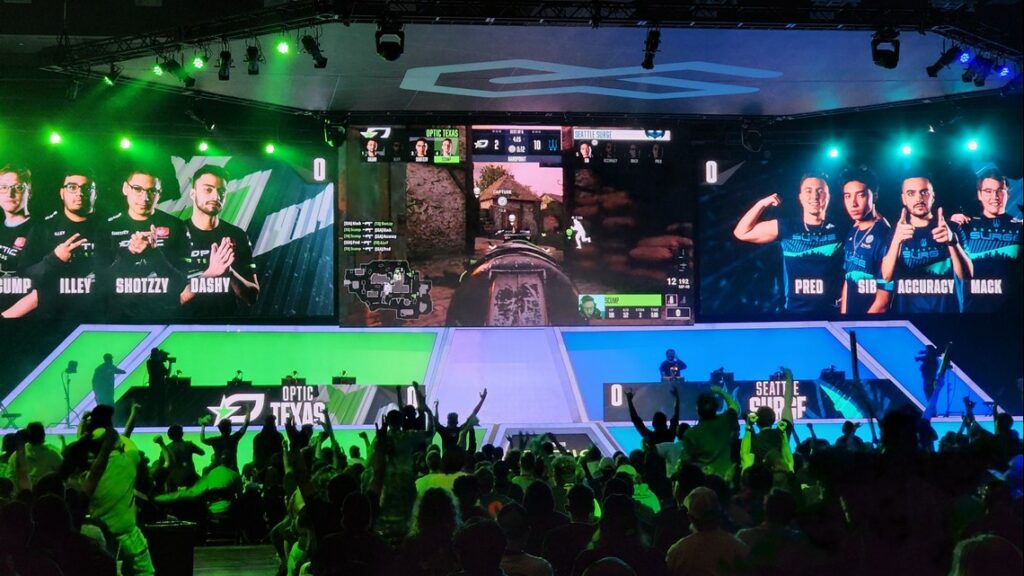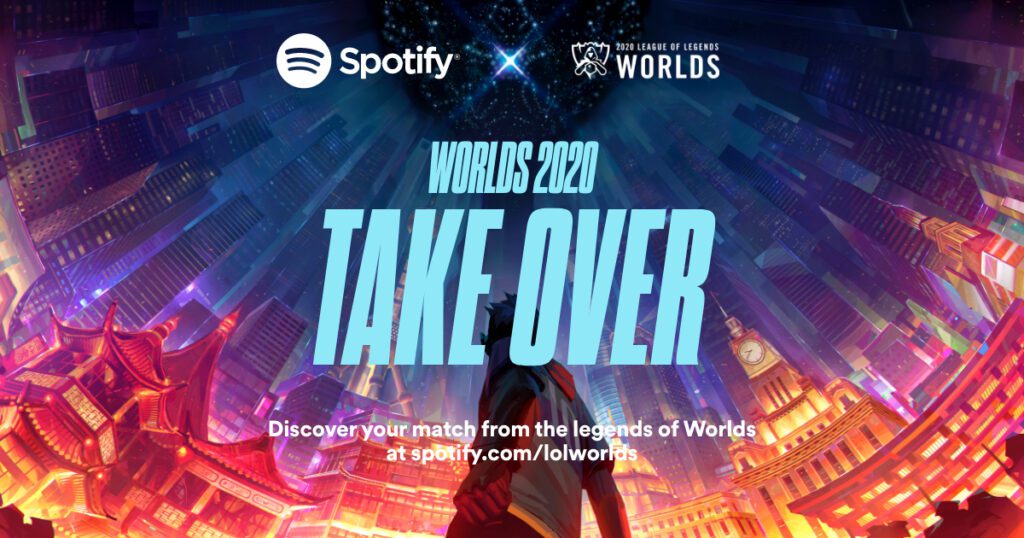The first pixels of Pong hit the screen in the 1970s, and the video game industry has been skyrocketing ever since. From those humble beginnings, it has exploded into a billion-dollar sector, one that’s projected to reach over $200 billion by 2023, according to a report by Mordor Intelligence. But what fuels this vast, ever-growing universe of gaming? The answer is both simple and complex – marketing.
So, whether you’re an indie developer looking to make your mark, a marketing professional seeking to understand this booming industry, or a gaming enthusiast curious about what goes on behind the scenes, this guide is for you. Grab your controller, keyboard, or touch screen and get ready – it’s game time! (sorry that was corny… I’ll see myself out).
Understanding the Video Game Market
Demographics and Psychographics
Video game marketing success hinges on understanding your audience – who they are, where they’re from, what they love, and what makes them tick. This insight starts with a comprehensive understanding of the demographics and psychographics of the gaming market.
1. Demographics
Demographics refer to statistical data relating to a population or particular groups within it. These are concrete, quantifiable facts about a group, like age, gender, income level, education, and geographic location. Here’s a breakdown of these elements in the gaming market:
- Age: Gone are the days when video gaming was solely a child’s pastime. According to the Entertainment Software Association’s 2021 report, the average age of a video game player is 35-44 years old. This isn’t to say that younger and older gamers don’t exist; it merely illustrates that the age range is broad, spanning from kids to adults, making it crucial to cater to a wide age range in your marketing strategy.
- Gender: The same report reveals that the gender split in the gaming industry is almost even, with 45% of gamers being female and 55% male. Thus, it’s vital to ensure your marketing isn’t overly skewed to one gender unless that’s the specific audience your game is designed for.
- Geographic Location: Gaming is a global phenomenon. According to NewZoo’s 2022 Global Games Market report, the Asia Pacific region has the most gamers, but North America and Europe also have significant shares. Understanding where your potential players live can inform localization strategies and optimize ad spending across regions.
- Income and Education: Income and education levels can impact the type of games consumers play and how much they’re willing to spend on gaming. Higher income levels may indicate a willingness to spend on premium games or in-game purchases, while education could hint at a preference for strategy games or complex RPGs.
2. Psychographics
Psychographics delve deeper into the minds of consumers, revealing their interests, values, attitudes, and lifestyles. Understanding gamer psychographics can help tailor marketing strategies for maximum appeal.
- Gaming Preferences: Are your target gamers fans of sprawling open-world adventures, or do they prefer quick casual games on their phones during a commute? Understanding what types of games your audience prefers will inform both game development and the marketing narrative.
- Values and Motivations: What drives your audience to game? Is it the thrill of competition, the desire for escapism, or the love of problem-solving? Tapping into these motivations in your marketing can create a powerful connection with potential players.
- Lifestyle and Habits: Does your audience play games in long marathons over the weekend, or do they prefer short gaming sessions throughout the day? Do they follow gaming influencers or watch esports events? These insights can guide the timing and placement of your marketing efforts.
- Community Engagement: Many gamers value the sense of community that gaming can provide. They engage on forums, social media platforms, and in-game chat rooms. Understanding how and where your target audience communicates can enable more effective community-building efforts, a critical part of video game marketing.
Types of Video Games and Their Impact on Marketing
Video games come in a wide range of genres and formats, each with its unique appeal and audience. Understanding these different types and how they affect marketing is crucial for any video game marketing strategy.
1. Casual Games
Casual games are designed for quick, easy-to-learn gameplay sessions. They often have simple mechanics and are designed to be played in short bursts. Examples include mobile games like “Angry Birds” and “Candy Crush Saga.”
- Demographics: Casual games typically have a broad demographic appeal, including both young and older players. They often have a significant number of female players, and their mobile nature means they’re popular among people who might not consider themselves traditional gamers.
- Marketing Strategies: Casual games often rely heavily on social media and word-of-mouth marketing. They also frequently use in-game advertisements and purchase incentives as part of their monetization strategy.
2. AAA Games
AAA or Triple-A games are high-budget, high-production titles developed by major studios. They often have cutting-edge graphics, in-depth storytelling, and extensive gameplay mechanics. Examples include “The Last of Us Part II,” “Red Dead Redemption 2,” and “Assassin’s Creed Valhalla.”
- Demographics: The audience for AAA games is typically more hardcore gamers, often in the 18-35 age range, who are willing to invest significant time and money into their gaming experiences.
- Marketing Strategies: AAA games often use traditional media strategies such as TV ads, online trailers, and influencer partnerships. Pre-order bonuses, limited editions, and post-launch downloadable content (DLCs) are also common strategies for these types of games.
3. Indie Games
Indie games are developed by small, independent studios or even individual developers. They often focus on innovative gameplay mechanics or unique artistic styles. Examples include “Hades,” “Among Us,” and “Stardew Valley.”
- Demographics: Indie games appeal to a wide demographic, including both younger players and older gamers who appreciate their innovation and creativity.
- Marketing Strategies: Indie games often rely on word-of-mouth and social media marketing. They also frequently leverage gaming platforms’ communities, like Steam’s community forums and review sections. Crowdfunding campaigns on platforms like Kickstarter can also serve as marketing tools.
4. Esports Titles
Esports titles are games designed for competitive play, often in a professional setting with tournaments and prize pools. They require a high level of skill and have a significant spectator component. Examples include “League of Legends,” “Counter-Strike: Global Offensive,” and “Dota 2.”
- Demographics: Esports titles often attract a younger, predominantly male audience. Many players are also active spectators of the game, watching professional tournaments and streams.
- Marketing Strategies: Esports games often use competitions, tournaments, and partnerships with professional teams and streamers for marketing. In-game cosmetics related to esports teams or events, like team jerseys or branded weapon skins, are also common.
5. Virtual Reality (VR) Games
VR games provide an immersive, 3D gaming experience through VR headsets. They can span various genres, from casual games to AAA titles. Examples include “Beat Saber,” “Half-Life: Alyx,” and “Superhot VR.”
- Demographics: VR games often attract tech-savvy gamers willing to invest in the required hardware. The age range can vary, though the physical nature of many VR games can appeal to younger players.
- Marketing Strategies: VR games often leverage the unique features of VR for marketing, showcasing the immersion and interactivity of the medium. Demos and experiential marketing, like VR installations at events, can also be effective.
Each of these game types attracts a unique set of players, and therefore requires distinct marketing strategies tailored to its audience. Understanding these differences, along with the current trends and popular titles within each category, is crucial when shaping your video game marketing efforts. It’s not only about reaching your target audience, but also understanding their gaming preferences, behaviors, and spending habits.
Ultimately, each game’s brand identity, target audience, and unique selling propositions should inform its marketing strategies.
Key Elements of Video Game Marketing
Marketing Strategies and their relevance
There are several strategies that can be employed in video game marketing, each with its own benefits and relevance. Here’s a brief explanation of the main ones:
- Pre-Launch Marketing: This involves generating buzz and anticipation for the game before it is released. Tactics could include teaser trailers, early access offers, influencer partnerships, press releases, and participation in industry events.
- Content Marketing: This involves creating and sharing valuable content related to the game to attract and engage potential players. Content could be anything from game guides and behind-the-scenes footage to developer interviews and player-generated content.
- Social Media Marketing: Leveraging social media platforms to promote the game, engage with players, share updates, and handle customer service.
- Community Marketing: Building, nurturing, and engaging an active community of players through forums, social media, in-game events, and user-generated content.
- Influencer Marketing: Partnering with influencers (streamers, YouTubers, professional gamers) to promote the game to their followers.
- Esports Marketing: If applicable, creating or sponsoring esports events to promote the game and engage with the competitive gaming community.
In the subsequent sections, we will dive deeper into each of these strategies, with real-life examples and case studies that illustrate their application and effectiveness in video game marketing.
Strategies for Video Game Marketing
Influencer Collaborations and Partnerships
1. Importance of influencers in the gaming industry
In the world of video games, influencers hold significant power. The rise of streaming platforms like Twitch and YouTube, along with the increased popularity of esports, has created a new class of celebrities within the gaming community. These influencers, whether they’re professional gamers, streamers, or content creators, command vast audiences who trust their opinions and follow their gaming habits closely.
Influencers have become an integral part of the gaming industry for several reasons:
- Reach: Influencers have wide-reaching audiences that span different geographies and demographics. A single post or live-stream can reach millions of viewers, providing a global reach that few other marketing methods can achieve.
- Trust: Fans of gaming influencers often view their favorite content creators as friends or peers. As a result, their opinions and recommendations carry significant weight. If an influencer endorses a game, it’s likely their audience will consider playing it.
- Engagement: The interactive nature of platforms like Twitch allows influencers to engage with their audiences in real-time. This two-way communication fosters a sense of community and keeps viewers invested in the influencer’s content.
- Content creation: Influencers regularly generate content around the games they play. This content, which can range from game reviews and playthroughs to highlights and meme compilations, provides additional exposure for the games and helps sustain interest over time.
As a result of these factors, influencer collaborations and partnerships have emerged as a powerful strategy for video game marketing. By working with influencers, game developers and publishers can increase their game’s visibility, attract potential players, and enhance community engagement.
2. Case Study: Fortnite and Travis Scott’s Virtual Concert
Fortnite, developed by Epic Games, is known for pushing boundaries and continuously innovating its approach to engage players. One of their most successful marketing strategies involved a collaboration with the Grammy-nominated artist, Travis Scott. In what was dubbed as the “Astronomical” event, Fortnite hosted a virtual concert featuring Scott, attracting over 12.3 million concurrent players and making it the game’s biggest event ever.


This strategy was a win-win situation for both parties. For Travis Scott, it was a unique opportunity to reach a massive, global audience at a time when traditional live performances were impossible due to the pandemic. For Fortnite, it brought unprecedented attention to the game and demonstrated the potential of virtual spaces for unique shared experiences.
The event was not just a passive viewing experience for players. Instead, Fortnite’s virtual world transformed in sync with the music, providing an interactive and immersive experience for the players. The success of this strategy lies in its understanding of the gaming community’s values: a desire for new, shared experiences, and a blending of gaming with other elements of pop culture.
Moreover, this event offered Fortnite an opportunity to make headlines and become a topic of conversation, even among non-players, proving the power of creative influencer collaborations in gaming.
Content Marketing
Content marketing has become an increasingly popular strategy for video game marketing. This approach focuses on creating, publishing, and distributing content for a targeted audience online. The goal is to provide valuable content that helps build strong relationships with your audience, improves engagement, increases brand recognition, and ultimately drives action.
In the realm of video games, content marketing can take many forms, ranging from blogs, game guides, and behind-the-scenes looks at game development, to trailers, live-streams, podcasts, and even in-game events.
One crucial thing to remember when employing a content marketing strategy is to provide value. Gamers appreciate content that enhances their playing experience, whether it provides new insights about the game, teaches them how to improve their skills, or simply entertains them. A successful content marketing strategy will take into account the preferences of the target audience and create content that meets their needs and interests.
1. Content Marketing in Gaming
In gaming, content marketing goes beyond just promoting a product. It’s about providing value to the gamer, enhancing their gaming experience, and establishing a deep connection with them. Content marketing in gaming can take several forms, including but not limited to:
- Game Trailers and Teasers: These provide a sneak peek into the game, exciting potential players about what to expect. They often include gameplay, storyline hints, and game mechanics. Trailers are a way to create hype and anticipation around a game before it’s released.
- Gameplay Videos and Live Streaming: Gameplay videos and live streams allow potential players to see the game in action. Platforms like Twitch and YouTube have millions of users who spend hours watching their favorite gamers play. It’s a chance for audiences to learn strategies, tips, and tricks while experiencing the game’s atmosphere.
- Blogs and Articles: These can be in-depth guides, tips, tricks, game lore, behind-the-scenes development processes, and any other written content that provides value to the player.
- Podcasts and Interviews: A growing trend in the gaming industry, these offer insights into the game development process, host discussions about game theory, or even delve into storytelling within the game universe.
- Social Media Interaction: Developers engaging with fans on social media platforms, answering questions, sharing insights, and teasing upcoming features or releases, fosters a sense of community and direct connection with players.
2. Case Study: Cyberpunk 2077 and Its Diverse Content Marketing Strategy
Cyberpunk 2077, developed by CD Projekt Red, serves as an interesting example of a diverse and multi-faceted content marketing strategy. Despite controversies post-launch, there’s no denying that the anticipation and buzz generated before the game’s release were monumental, largely due to their marketing approach.


- Pre-Launch Trailer and Teasers: Cyberpunk 2077 released multiple trailers over the years, each providing glimpses into the game’s world, story, characters, and gameplay. Their trailers amassed millions of views on YouTube, stirring interest and conversation.
- Celebrity Endorsement: The involvement of Keanu Reeves, a well-known actor, added a unique aspect to their campaign. His appearance at the E3 2019 conference announcing his role in the game became a viral moment and contributed significantly to the hype.
- Behind-the-Scenes Content: CD Projekt Red regularly shared behind-the-scenes videos titled ‘Night City Wire’ episodes. They offered deep dives into various aspects of the game, from lore to gameplay mechanics, further engaging their audience.
- Social Media Engagement: Their social media strategy was a key pillar of their campaign, with regular updates, interactions with fans, and announcements. Their Twitter account was particularly active, engaging in conversations and even embracing memes related to the game.
- Partnerships: Cyberpunk 2077 also employed a unique strategy of partnering with various brands for limited-edition products, from energy drinks to cars, reinforcing their presence and visibility even outside of traditional gaming circles.
Though the game’s launch was met with criticism, the hype generated by their content marketing strategy led to strong initial sales, demonstrating the power of a well-executed content marketing campaign in gaming.
Community Building in Gaming
1. Role of Community in Gaming
Community plays a pivotal role in the video game industry. It is the backbone of any successful video game, as it fosters player engagement, retention, and promotes a sense of belonging. An engaged community contributes to the longevity of a game, as active, committed players can keep a game alive and thriving for years.
In the gaming world, community building goes far beyond simply having a player base. It’s about creating a shared space where players can interact with each other and with the game developers. Here are some key aspects of community building in gaming:
- Player Engagement: It involves developers directly interacting with players, listening to their feedback, and responding to their needs. Regular updates, patches, and game improvements based on player feedback is a common method of engagement.
- Shared Experiences: Multiplayer and cooperative gameplay, in-game events, and competitions provide shared experiences that foster a sense of community among players.
- Player Support: Forums, help centers, and responsive customer service help players feel supported and heard, further enhancing their engagement with the game.
- User Generated Content: Encouraging players to create and share their own content, such as game mods, fan art, and gameplay videos, can create a powerful sense of ownership and commitment in the community.
- Social Media Interaction: Leveraging platforms like Twitter, Reddit, and Discord to create a dialog with players, share updates, and address concerns, can foster a stronger connection between game developers and players.
2. Case Study: Among Us and Its Use of Community Engagement


Among Us, developed by InnerSloth, serves as a brilliant example of how community engagement can propel a game to success. Despite its release in 2018, it wasn’t until mid-2020 that Among Us surged in popularity. The game’s simplicity, combined with its emphasis on social interaction, made it highly engaging for players, but it was the community engagement strategies that sustained and increased its popularity:
- User Generated Content: Among Us benefited enormously from user-generated content. Twitch streamers and YouTubers playing the game with friends created hilarious and relatable content, which was then shared across various platforms, reaching a large audience and enticing new players.
- Active on Social Media: InnerSloth maintained an active presence on social media, sharing updates, engaging with players, and even sharing fan-created content, fostering a sense of camaraderie and engagement within the community.
- Responsive to Feedback: InnerSloth was responsive to player feedback, consistently updating the game and addressing issues pointed out by the community. When the game’s popularity skyrocketed, instead of rushing to release a sequel, they decided to focus on improving the current game based on player feedback, an approach appreciated by the community.
- Support for Modding Community: Among Us also has a thriving modding community. InnerSloth’s support for this community and the user-generated content it produces added another layer to the game’s appeal and community strength.
In a nutshell, Among Us’s unprecedented success can be attributed to the power of community engagement in video gaming. By encouraging user-generated content, being responsive to player feedback, and leveraging social media for community interaction, InnerSloth was able to transform a simple game into a global phenomenon.
Utilizing Social Media and Streaming Platforms
1. Benefits of Social Media and Streaming Platforms
Social media and streaming platforms are invaluable tools in video game marketing. They offer multiple benefits that make them indispensable in the current gaming industry landscape:
- Visibility and Reach: Platforms like Twitter, Instagram, Facebook, and YouTube have billions of active users. Utilizing these platforms allows developers to reach a global audience and increase the visibility of their games.
- Community Building: Social media platforms provide an excellent avenue for building and nurturing a community. Developers can interact directly with their player base, solicit feedback, and keep them engaged with regular updates and news about the game.
- Influencer Marketing: Influencer marketing is a powerful strategy in the gaming industry. Social media platforms allow developers to collaborate with influencers who can play and promote their games to their followers, creating buzz and driving game sales.
- Streaming Platforms: Platforms like Twitch and YouTube Gaming are particularly effective in video game marketing. Live streams of gameplay provide potential players with a first-hand experience of the game and foster a sense of community among viewers. Exclusive live-streamed events and partnerships with popular streamers can significantly boost a game’s popularity.
2. Case Study: Apex Legends and Its Launch Strategy on Twitch
The launch strategy of Apex Legends, developed by Respawn Entertainment and published by Electronic Arts, offers a textbook example of effectively leveraging a streaming platform for game marketing.


Unlike traditional marketing campaigns, Apex Legends was launched without any pre-release hype or advertising. Instead, Respawn focused on a “surprise” launch strategy leveraging Twitch, the world’s leading live streaming platform for gamers.
- Influencer Partnerships: On launch day, Respawn partnered with top gaming influencers and streamers, including Shroud, Dr Disrespect, and Ninja. These streamers were among the first to play the game live on their Twitch channels, instantly exposing Apex Legends to their millions of followers.
- Twitch Rivals: Respawn also collaborated with Twitch to host the Apex Legends Challenge, a two-part competitive event that took place within a week of the game’s release. This event featured 48 of the biggest streamers on Twitch and provided high-level exposure for the game.
This strategic use of Twitch and influencer partnerships led to a staggering success for Apex Legends, with the game amassing over 2.5 million players within the first 24 hours of its launch and 50 million in the first month. It demonstrates the power and potential of social media and streaming platforms in the marketing of video games.
Creative Advertising and Brand Collaborations
1. Importance of Creativity and Collaboration in Ads
Creative advertising and brand collaborations form a crucial aspect of video game marketing. A creative ad campaign can make a significant impact, grab potential gamers’ attention, and differentiate the game from a sea of competitors. The best ad campaigns often tell a story, engage emotions, or use humor, all of which helps to create memorable content that resonates with audiences.
Meanwhile, brand collaborations open up a wealth of marketing opportunities. They offer an excellent way for video games to reach new audiences, diversify marketing content, and provide unique in-game experiences:
- Expanded Reach: Collaborations allow video games to tap into the partner brand’s customer base, which might be a different demographic than the game’s traditional audience.
- Unique Content: Collaboration often involves unique, themed content that can intrigue both existing players and potential new ones. This can include in-game items, events, or gameplay modes related to the partner brand.
- Increased Visibility: The publicity and buzz around a collaboration can increase the game’s visibility, especially if the partner brand is outside of the gaming industry.
2. Case Study: PUBG and Its Collaboration with Mountain Dew
PlayerUnknown’s Battlegrounds (PUBG), developed and published by PUBG Corporation, illustrates the potential of creative advertising and brand collaborations. In 2020, PUBG announced a global partnership with Mountain Dew, the carbonated soft drink brand.
The collaboration was a blend of in-game integration and real-world rewards:
- In-Game Integration: Limited-edition Mountain Dew fuel stations were added across the game’s maps, offering loot items. This integrated branding provided players with a unique in-game experience related to the Mountain Dew brand.
- Real-World Rewards: Players in certain regions could also earn rewards in the real world. By purchasing specially-marked Mountain Dew products, they could redeem exclusive in-game rewards like weapon skins and more.
Augmented Reality (AR) and Virtual Reality (VR) Marketing
1. Benefits of AR and VR in Video Game Marketing
Augmented Reality (AR) and Virtual Reality (VR) are game-changers in the video game industry, and their roles extend into marketing as well. These technologies offer unique and immersive ways to engage audiences and have several key benefits in video game marketing:
- Immersive Experiences: Both AR and VR can create immersive experiences that traditional 2D platforms can’t match. They provide players with the feeling of ‘being in the game’, heightening their emotional connection to the game and making the marketing message more impactful.
- Interactive Demos: AR and VR can be used to create interactive game demos that potential players can try before buying the game. This not only gives a taste of the gameplay but also leaves a strong impression that’s likely to stick in consumers’ minds.
- Memorable Campaigns: AR and VR campaigns are unique and memorable, making them effective at grabbing attention in a crowded market.
- Innovative Brand Image: The use of cutting-edge technology like AR and VR can position a game as innovative and forward-thinking, enhancing its brand image.
2. Case Study: Pokémon GO and Its Use of AR
Pokémon GO, developed and published by Niantic in collaboration with Nintendo, is a sterling example of the power of AR in video game marketing. The game took the world by storm upon its release in 2016, in large part due to its innovative use of AR technology.


Pokémon GO uses AR to overlay digital creatures (Pokémon) onto the real world, as viewed through a player’s smartphone camera. This AR integration not only created a unique and immersive gaming experience but also played a significant role in the game’s marketing:
- Word-of-Mouth: The novelty of Pokémon appearing in real-world environments led to significant word-of-mouth marketing. Excited players shared screenshots and stories, organically promoting the game to their networks.
- Media Coverage: The innovative use of AR technology generated substantial media coverage, boosting the game’s visibility and attracting new players.
- Public Events: Pokémon GO hosted public events at real-world locations, where players could gather to catch rare Pokémon. These events created a sense of community, boosted player engagement, and provided additional opportunities for marketing and publicity.
Game-Specific Marketing Strategies
Mobile Games
1. Importance of ASO and Mobile Ads
With mobile gaming accounting for a significant portion of the global gaming industry, effective marketing strategies for mobile games are vital. Two key aspects of mobile game marketing are App Store Optimization (ASO) and mobile ads:
- App Store Optimization (ASO): Similar to SEO for websites, ASO involves optimizing a mobile game’s app store listing to increase its visibility in search results. This includes optimizing the game’s title, description, keywords, screenshots, and reviews to improve its ranking in app store search results, making it easier for potential players to discover the game.
- Mobile Ads: Mobile advertising plays a crucial role in getting a game in front of potential players. This can include in-app ads, social media ads, banner ads on websites, video ads, and more. The key is to create engaging, eye-catching ads that effectively communicate the game’s appeal.
2. Case Study: Clash of Clans and Its Humorous Ad Campaigns
Supercell’s mobile game, Clash of Clans, offers a prime example of effective mobile game marketing. One of the strategies that contributed to the game’s massive success was its humorous and engaging ad campaigns.
Supercell created a series of ads featuring animated characters from the game in various funny and relatable situations. The ads were designed to entertain first and sell second, making viewers more likely to share them and spread the word about the game.
The campaigns, which included partnerships with high-profile celebrities like Liam Neeson and Christoph Waltz, were launched across multiple channels, including TV, online platforms, and social media. These ads did more than just showcase the game’s features; they told stories, made viewers laugh, and built a strong brand identity for Clash of Clans.
The success of Clash of Clans’ marketing approach demonstrates the power of creative and engaging mobile ads, as well as the importance of leveraging ASO and advertising channels to maximize a mobile game’s visibility.
PC/Console Games
1. Role of Game Reviews and Gaming Expos
In the PC and console gaming market, two elements play a critical role in the marketing of a game: game reviews and gaming expos.
- Game Reviews: Reviews from both professional critics and players can make or break a game’s success. High review scores can tremendously boost a game’s reputation and sales, while poor reviews can harm them. Therefore, creating a high-quality game that can withstand scrutiny is paramount. Developers also need to manage their relationships with reviewers and influencers, ensuring they have access to the game in a timely manner to review it.
- Gaming Expos: Expos and conventions like E3, PAX, and Gamescom offer significant opportunities for game developers to showcase their upcoming titles to a global audience. These events can generate substantial buzz and anticipation for a game. They are a chance to reveal game trailers, offer playable demos, and provide the audience with exclusive insights into the game’s development. The presence of the press and influencers at these events can amplify this impact, spreading news and impressions of the game to their followers.
2. Case Study: Call of Duty and Its Marketing Over The Years
Activision’s Call of Duty franchise is an interesting example of effective marketing strategies for PC/console games. The game has evolved significantly over the years, and so have its marketing strategies.
Initially, Call of Duty relied heavily on traditional advertising methods, like TV ads and billboard campaigns, to promote new game releases. As the franchise grew and the gaming industry evolved, Call of Duty began incorporating digital marketing strategies, such as social media campaigns and influencer partnerships, to engage a broader audience.


One particularly effective strategy has been the game’s use of live events. For example, Call of Duty has hosted several live multiplayer events where fans can watch influencers and professional gamers battle it out. These events generate significant buzz and engagement, boosting anticipation for the game’s release.
Furthermore, Call of Duty has also been strategic in its collaborations and partnerships. The franchise has worked with celebrities like Keanu Reeves and Marshmello to promote its games, leveraging their popularity to reach a wider audience.
Over the years, Call of Duty’s marketing strategies have demonstrated the importance of adapting and evolving with the market, leveraging a mix of traditional and digital marketing strategies, and the power of live events and strategic collaborations in promoting PC/console games.
eSports Marketing
1. Understanding the eSports Market
eSports has evolved from being a niche market into a booming industry that attracts millions of viewers worldwide. Its audience, primarily young, tech-savvy, and passionate about gaming, differs significantly from that of traditional sports.
eSports marketing is about leveraging the competitive, interactive, and immersive nature of video games. Unlike in traditional sports marketing, where fans are spectators, eSports fans are often players of the games themselves. This gives marketers unique engagement opportunities, as fans can relate personally to the skills, strategies, and excitement showcased in eSports tournaments.
eSports marketing is heavily reliant on digital platforms, with live streaming platforms like Twitch and YouTube Gaming being the primary venues for eSports events. Additionally, social media platforms play a crucial role in fostering community interactions, sharing game updates, and promoting upcoming tournaments.
Sponsorship and partnerships also play a significant role in eSports marketing, providing brands a way to reach the passionate and engaged eSports audience.
2. Case Study: League of Legends and Its Partnership with Spotify


Riot Games, the developer of the popular eSports game League of Legends, has embraced innovative marketing strategies to engage its global fanbase. A standout example is its partnership with Spotify.
In this collaboration, Riot Games and Spotify developed an exclusive hub for League of Legends content on the music streaming platform. This included a range of materials, from official game soundtracks and podcasts to curated playlists and behind-the-scenes interviews with the composers and musicians.
This partnership benefited both parties. Spotify attracted the large and engaged League of Legends fanbase, while Riot Games received a dedicated platform to share its high-quality, immersive game-related content.
The collaboration also exemplified the power of content marketing in eSports, with the exclusive League of Legends hub offering a variety of engaging content that appealed to both current fans and potential new ones.
Moreover, it highlighted the value of accessibility. Fans could consume League of Legends content wherever they were, making it easier for them to stay connected with the game they love. This, in turn, deepened their relationship with the game and reinforced their loyalty to the brand.
This case study underlines the importance of understanding the unique characteristics of the eSports audience and creating partnerships and content that appeal to them and fit their lifestyle.
Monitoring and Adapting Marketing Strategies
Importance of Monitoring Marketing Campaigns


Monitoring marketing campaigns is an essential step in any marketing strategy, including in video game marketing. It provides insights into what works and what doesn’t, helping you to continuously improve and refine your strategy. You can use a platform like TwitchMetrics, which the image above is a screenshot from to report back on your campaigns easily.
Keeping track of the performance of marketing campaigns allows you to measure ROI and identify which tactics yield the best results. You can understand your audience better, learn what type of content they engage with most, and determine the most effective platforms and channels for reaching them.
Monitoring also helps you spot trends and changes in player behavior and market conditions. This can inform your future strategies and help you stay ahead of your competitors.
Tools and Techniques to Track Marketing Success
There are numerous tools and techniques you can use to track the success of your video game marketing campaigns. Here are a few examples:
- Analytics tools: These provide insights into player behavior, engagement rates, conversion rates, and more. TwitchMetrics, Google Analytics, for instance, can track website traffic and user behavior, while social media platforms like Facebook and Twitter have their built-in analytics.
- KPIs: Key Performance Indicators (KPIs) are metrics that reflect the success of a campaign in meeting its objectives. These could include downloads, active users, session duration, in-game purchases, and social media engagement, among others.
- Surveys and player feedback: Direct feedback from your players can provide invaluable insights. This can be gathered through surveys, reviews, social media comments, and community forums.
- A/B testing: This technique involves comparing two versions of a campaign element (like a landing page or an ad) to see which performs better.
How to Adapt Strategies Based on Feedback and Results
Once you’ve gathered data and feedback from your campaigns, it’s crucial to interpret these insights and apply them to your future strategies.
If a campaign is performing well, analyze what’s driving its success. Is it the platform you’re using? The type of content? The timing? Take these successful elements and incorporate them into your other campaigns.
Conversely, if a campaign isn’t meeting its goals, try to understand why. Is it not resonating with your audience? Are there technical issues affecting user experience? Once you’ve identified the problems, you can take steps to address them.
Remember that the gaming market is dynamic and constantly evolving. Player tastes can change, new trends can emerge, and new platforms and technologies can transform the landscape. Being flexible and adaptable is key to staying relevant and maintaining a successful video game marketing strategy.
Conclusion
Understanding your audience, using influencers, creating compelling content, and leveraging technology are cornerstones of effective video game marketing. We’ve explored a variety of strategies and examples to illustrate these points. Looking forward, it’s essential to stay updated with evolving trends and continue innovating. Your focus should be on connecting with gamers, providing immersive experiences that delight. Learn, adapt, and grow with the dynamic landscape of this industry.

